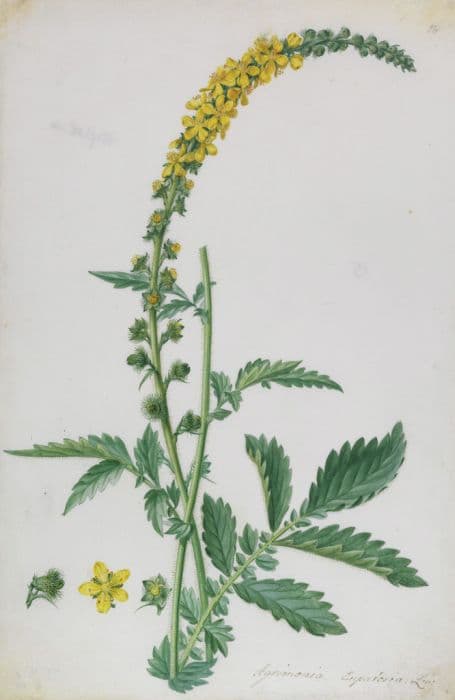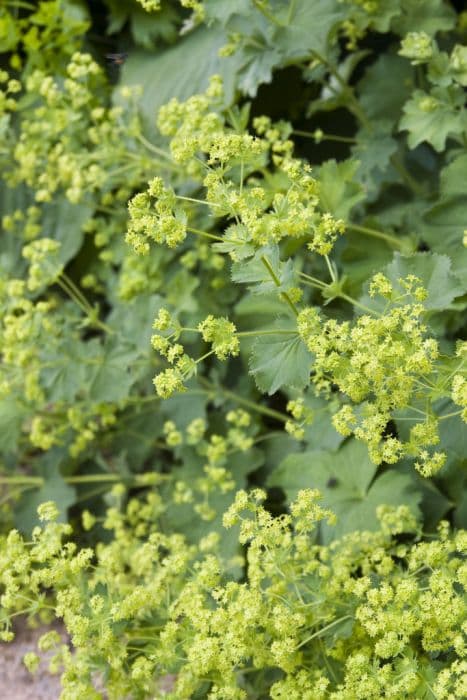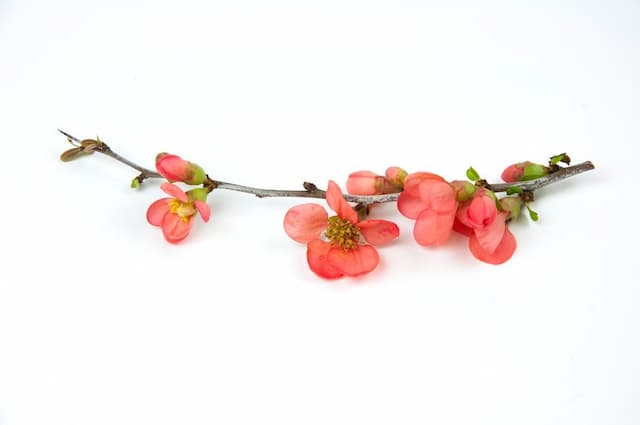Hollyberry Cotoneaster Cotoneaster bullatus

ABOUT
Cotoneaster bullatus, commonly known as the hollyberry cotoneaster, is a prominent plant with a distinctive appearance. This plant is characterized by its sprawling branches which bear small, oval to elliptical-shaped leaves. The leaves themselves are a lush green color and exhibit a slightly pleated or bulging texture, being prominently veined, which adds depth and interest to the foliage. During the flowering season, this cotoneaster becomes adorned with small, pinkish-white flowers that are arranged in clusters. These modest yet attractive blooms are a source of nectar for pollinators and are succeeded by the plant's standout feature—its berries. The berries are a bright red color, resembling tiny holly berries in appearance, which is often why this plant is appreciated for its ornamental value. These berries persist well into the winter, providing a splash of color during the colder months and a food source for birds. The hollyberry cotoneaster's branches grow with a natural arch, and over time they create a dense, mounding mass, which adds a structural element to garden designs. The plant has a rugged, hardy disposition, and its leaves often turn to shades of yellow and bronze before falling in the autumn, marking a seasonal transition that is both visually pleasing and an important part of its life cycle. Without a doubt, the hollyberry cotoneaster is recognized for its seasonal interest and wildlife value, making it a distinguished addition to diverse landscape settings.
About this plant
 Names
NamesFamily
Rosaceae.
Synonyms
Hollyberry Cotoneaster, Bulleted Cotoneaster, Large Cotoneaster.
Common names
Cotoneaster longipes var. bullatus
 Toxicity
ToxicityTo humans
Hollyberry (Cotoneaster bullatus) is generally considered to have a low level of toxicity to humans. Ingestion of its parts, particularly the berries, can potentially cause gastrointestinal discomfort, including nausea, vomiting, and diarrhea. It's important to note that, although not highly poisonous, it is still inadvisable for any parts of the plant to be ingested, especially by children.
To pets
Hollyberry (Cotoneaster bullatus) can also be toxic to pets if ingested. Similar to its toxicity in humans, consuming parts of the plant, especially the berries, can cause gastrointestinal upset in pets. Symptoms of poisoning in pets may include vomiting, diarrhea, and abdominal pain. In severe cases, ingestion can lead to more serious symptoms, but such occurrences are relatively rare. It is advisable to prevent pets from having access to or ingesting any parts of the plant.
 Characteristics
CharacteristicsLife cycle
Perennials
Foliage type
Deciduous
Color of leaves
Green
Flower color
White
Height
6 feet (1.8 meters)
Spread
8 feet (2.4 meters)
Plant type
Shrub
Hardiness zones
5
Native area
China
Benefits
 General Benefits
General Benefits- Landscaping: Cotoneaster bullatus, also known as hollyberry cotoneaster, is often used in landscaping for its compact growth habit and decorative red berries, which add visual interest to gardens and parks.
- Habitat for Wildlife: The dense foliage and abundant berries provide food and shelter for various species of birds and insects.
- Erosion Control: Its extensive root system helps to stabilize soil on slopes and prevent erosion.
- Low Maintenance: Hollyberry cotoneaster is known for being a low maintenance plant that requires minimal care once established, making it suitable for urban and residential settings.
- Drought Tolerance: Once established, it is relatively drought-tolerant, reducing the need for frequent watering.
- Year-round Interest: With its evergreen leaves, showy flowers in the spring, and colorful berries in the autumn, it offers visual interest throughout the year.
- Hedging: It can be pruned into a formal hedge or left to grow naturally, providing a living fence that offers privacy and wind protection.
- Tolerance to Different Conditions: It can thrive in a variety of soil types and can tolerate urban pollution, making it versatile for different landscape settings.
 Medical Properties
Medical PropertiesThis plant is not used for medical purposes.
 Air-purifying Qualities
Air-purifying QualitiesThis plant is not specifically known for air purifying qualities.
 Other Uses
Other Uses- Cotoneaster bullatus can be used for bonsai due to its small leaves and capability to be shaped through careful pruning, providing aesthetic miniaturized trees.
- The dense foliage of Cotoneaster bullatus provides excellent cover for birds, making it a valuable plant for wildlife in gardens.
- The berries of Cotoneaster bullatus can serve as a source of food for various bird species during the winter months when other resources are scarce.
- Cotoneaster bullatus can act as a natural fence or screen when planted in rows, offering privacy and reducing wind in exposed areas.
- The plant's stiff branches can be used in floral arrangements as they provide a sturdy structure to support other elements in a bouquet.
- Gardeners sometimes use the plant for ground cover to suppress weeds and reduce soil erosion on slopes or large garden areas.
- The wood of Cotoneaster bullatus is suitable for creating small handicrafts or as intricate carving material for hobbyists or artists.
- During autumn, the colorful leaves and berries can serve as natural decorations indoors, bringing a touch of fall color into homes.
- The branches of Cotoneaster bullatus can be used as rustic supports for climbing plants or vines in a garden setting.
- Harvested branches from Cotoneaster bullatus can be woven into wreaths or other decorative shapes, capitalizing on their flexibility when green.
Interesting Facts
 Feng Shui
Feng ShuiThe Cotoneaster is not used in Feng Shui practice.
 Zodiac Sign Compitability
Zodiac Sign CompitabilityThe Cotoneaster is not used in astrology practice.
 Plant Symbolism
Plant Symbolism- Resilience: Cotoneaster bullatus, commonly known as the hollyberry cotoneaster, is a hardy plant that can survive in tough conditions, symbolizing the ability to endure and thrive through adversity.
- Protection: With its dense growth habit, the hollyberry cotoneaster can provide shelter for birds and wildlife, representing protection and safety.
- Bountifulness: The prolific red berries of the hollyberry cotoneaster symbolize abundance and the bounty of nature.
- Boundary-Setting: Often used as a hedge plant, the hollyberry cotoneaster represents setting boundaries and creating private, sacred spaces.
 Water
WaterThe Bullate Cotoneaster should be watered thoroughly when the top inch of soil feels dry, which typically means watering once every week or two, depending on the weather conditions and soil drainage. Provide enough water to moisten the soil to a depth of at least a couple of inches. It's important not to overwater, as this plant does not like to sit in wet soil. During the growing season, in the absence of rain, a general guideline is to provide about 1 to 1.5 gallons of water every 7 to 10 days. However, always adjust watering to your specific environmental conditions and check the moisture level of the soil before each watering.
 Light
LightBullate Cotoneaster thrives in full sun to partial shade conditions. It prefers a spot where it can receive at least six hours of direct sunlight daily, but it can also tolerate light dappled shade, especially in hotter climates. Positioning the plant in a south-facing or west-facing location will ensure it receives the amount of light it needs to flourish.
 Temperature
TemperatureThe Bullate Cotoneaster is relatively hardy and can survive in temperatures as low as 0 degrees Fahrenheit, but the ideal temperature range for this plant is between 50 to 70 degrees Fahrenheit. Avoid planting in areas that consistently experience temperatures above 85 degrees Fahrenheit, as extreme heat can stress the plant.
 Pruning
PruningPrune Bullate Cotoneaster to shape it and remove any dead or diseased branches; this is best done during the late winter or early spring before new growth starts. Thinning out older branches every few years helps to rejuvenate the plant and enhance flowering and fruiting. It is not necessary to prune this plant annually; doing it every 2 to 3 years is typically sufficient.
 Cleaning
CleaningAs needed
 Soil
SoilThe Bullate Cotoneaster thrives in well-draining soil with a mix of loam and sand, enriched with organic matter. The ideal pH for this plant ranges from slightly acidic to neutral, around 6.0 to 7.5.
 Repotting
RepottingBullate Cotoneaster does not require frequent repotting; it is generally sufficient to repot every 2 to 3 years to refresh the soil and accommodate its growth.
 Humidity & Misting
Humidity & MistingThe Bullate Cotoneaster prefers moderate humidity and can tolerate the natural humidity levels of most temperate outdoor environments without needing special attention.
 Suitable locations
Suitable locationsIndoor
Provide bright light and avoid overwatering.
Outdoor
Plant in well-drained soil with full sun to partial shade.
Hardiness zone
5-7 USDA
 Life cycle
Life cycleBulged Cotoneaster begins its life as a seed which after stratification (a period of cold to break dormancy) germinates in the spring. The seedling then establishes itself, often in well-drained soil in full sun to partial shade, and grows into a juvenile plant, developing a root system and foliage. As it matures, this deciduous shrub will experience vegetative growth, producing a dense canopy of oval, dark green leaves with a bullate surface. After a few years, the mature Bulged Cotoneaster will produce clusters of small, pinkish-white flowers in late spring to early summer, attracting pollinators. Following pollination, these flowers give way to red berries (pomes) in autumn, which disperse seeds through ingestion by wildlife. In winter, the plant exhibits dormancy, with leaves shedding and growth processes slowing down to survive cold conditions.
 Propogation
PropogationPropogation time
Spring-Early Summer
The most popular method of propagating Cotoneaster bullatus, commonly known as Hollyberry Cotoneaster, is through semi-hardwood cuttings. This is typically done in late summer. Semi-hardwood cuttings are taken from the current year's growth that has begun to mature and turn woody, but is not completely hardened. Cut a 4 to 6 inch (10 to 15 centimeter) length of stem, ensuring there are at least two to three sets of leaves. Remove the leaves from the lower half to prevent moisture loss and dip the cut end into rooting hormone. Plant the cutting into a pot filled with a mixture of peat and perlite or sand to ensure good drainage. Keep the soil moist and the cutting in a warm place out of direct sunlight. Roots should develop in a few weeks, after which the plant can eventually be transferred to a more permanent location.









